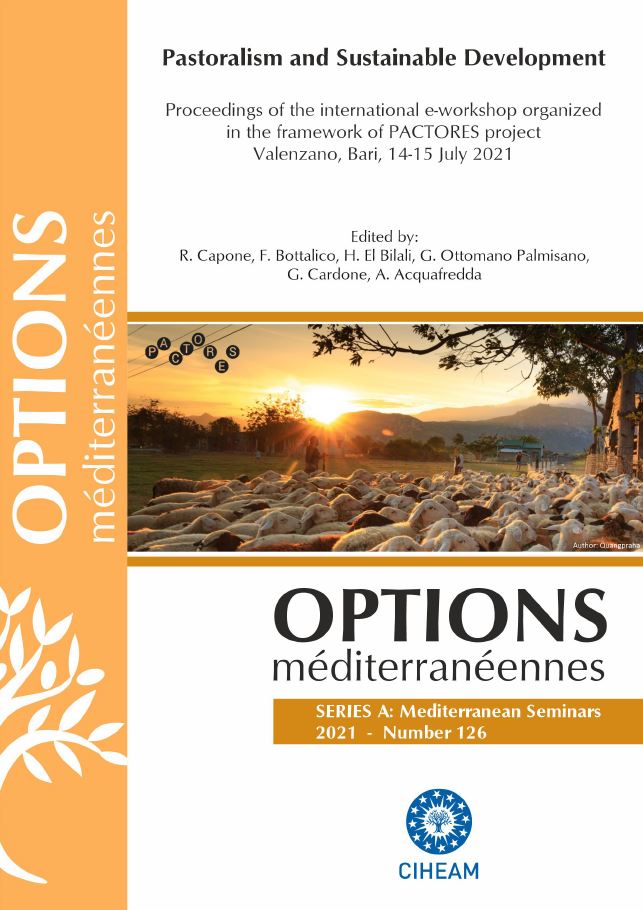| Article précédent | p. 169-175 | Article suivant |
The impact of animal husbandry on Thessaly’s landscape, Greece
Animal husbandry, especially the transhumant sheep and goat farming system, was one of the main factors shaping Greece’s rural landscapes for centuries. The last few decades, the abandonment of this traditional, extensive form of animal husbandry, combined with the changes in animal breeds and the increase of animals being kept indoors and given complementary feeds, had a great impact on the landscape. In the area of Thessaly there is a long history of livestock grazing which affected landscape structure. In the lowlands, a characteristic zone with grasslands around the villages is present, contrary to the rest of Greece where it is limited. This study aims to provide an insight on landscape changes during the last century. For this purpose, landscape structure of Thessaly’s lowland grasslands was studied using Corine Land Cover 1990 and 2018 in a G.I.S. environment. Overall, the communal grasslands around the urban, lowland areas of Thessaly occupied 7807,1 ha in 1990 and only 4255,8 ha in 2018 (-45,5%). In Western Thessaly these areas were more extensive, probably due to the seasonal movements of transhumants that exploited the lowland grasslands during the winter season. In Eastern Thessaly they occupied a smaller area, probably because transhumants spent the winter at the foothills, leaving the extensive plains exclusively for agricultural exploitation.
L’élevage d’animaux, en particulier le système d’élevage ovin et caprin transhumant, a été l’un des principaux facteurs qui ont façonné les paysages ruraux de la Grèce depuis des siècles. Au cours des dernières décennies, l’abandon de cette forme d’élevage traditionnelle et extensive, combinée avec l’évolution des races animales et avec l’augmentation du nombre d’animaux sédentaires et bénéficiant d’aliments complémentaires, a eu un impact considérable sur le paysage. Dans la région de Thessalie, il existe une longue tradition de pâturage du bétail qui a affecté la structure du paysage. Dans les plaines, une zone caractéristique avec des prairies autour des villages est présente, contrairement au reste de la Grèce où celle-ci est limitée. Cette étude vise à donner un aperçu des changements du paysage au cours du dernier siècle. À cette fin, la structure paysagère des prairies de basse altitude de Thessalie a été étudiée en utilisant Corine Land Cover 1990 et 2018 dans un environnement G.I.S. Dans l’ensemble, les prairies communales autour des zones urbaines et les plaines de Thessalie occupaient 7 807,1 ha en 1990 et seulement 4 255,8 ha en 2018 (-45,5 %). En Thessalie occidentale, ces zones étaient plus étendues, probablement en raison des mouvements saisonniers de transhumants qui exploitaient les prairies de plaine pendant la saison hivernale. En Thessalie orientale, ils occupaient une zone plus réduite, probablement en raison du fait que les transhumants passaient l’hiver aux piémonts, laissant ainsi les plaines extensives exclusivement pour l’exploitation Agricole.
- [ Télécharger ]
- [ Exporter la citation ]
Vous pouvez télécharger la citation au format :
- [ Imprimer ]
- [OMA126]




